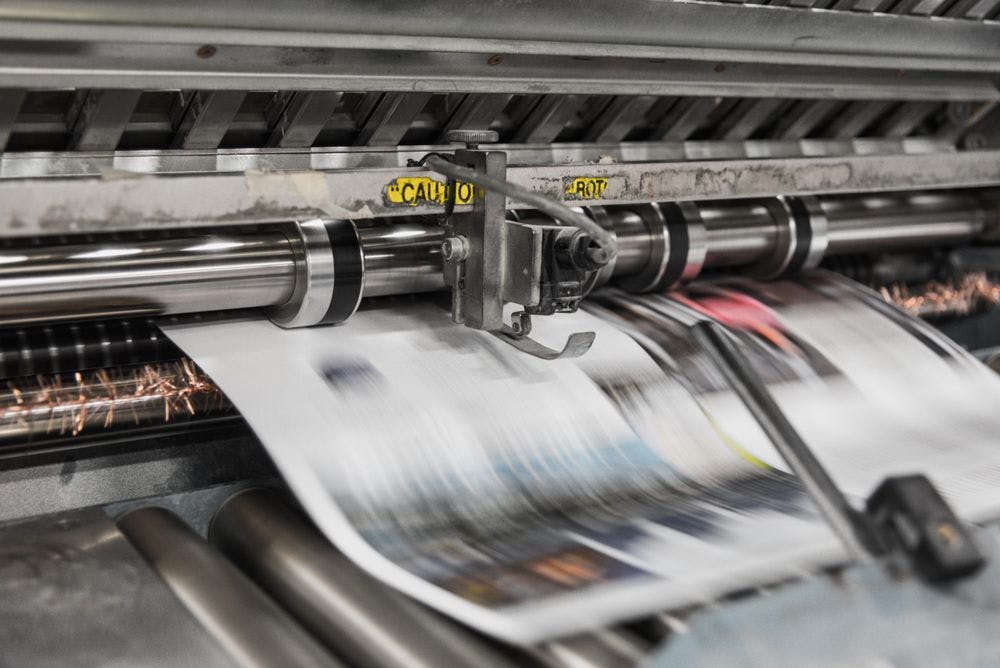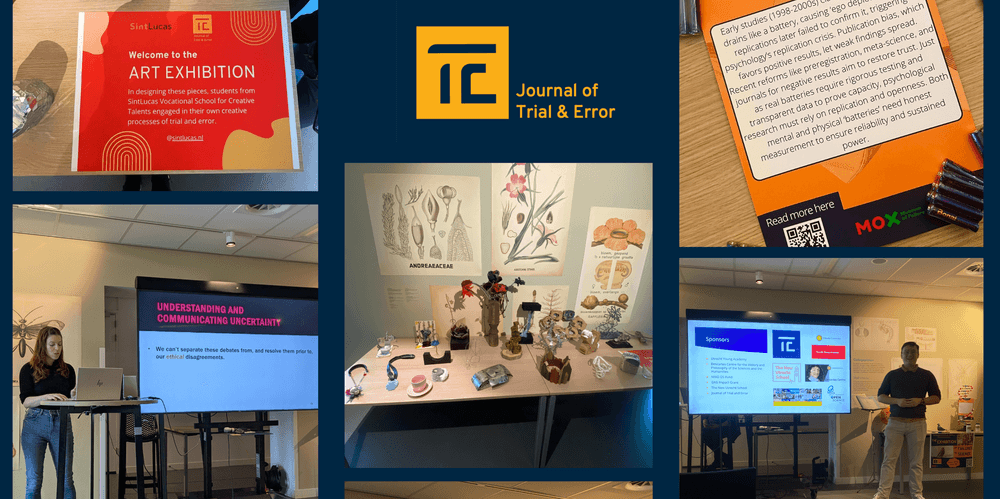~ 12 min read
DOI: https://doi.org/10.36850/x3mp-cp08
Not All That Shines Is Diamond: Why Open Access Publication Favors Rich Authors, Prestigious Universities and Industry-Funded Research
In recent years, it has become increasingly common for researchers to publish their work in Open Access by paying article processing costs to the publisher [1, 2]. Before the digital revolution, academic publishing was mostly subscription-based and university libraries paid publishers at regular intervals for large bundles of journals. Every physical copy of a journal came with its own production and distribution costs, making Open Access an unrealistic pursuit. When academic research was digitalized and the costs of copying and disseminating research lowered dramatically, the Open Access movement gained momentum and at least four ways of Open Access (OA) publishing joined the old subscription model [3]. Authors can now publish their studies in subscription-based Green OA journals, which allows them to republish their work on large preprint servers such as ArXiv and in freely accessible institutional repositories managed by university libraries. A second option is to publish in full Open Access, peer-reviewed journals that rely on author-paid article processing costs to maintain a steady source of income. Diamond OA journals like the Journal of Trail and Error also publish in full Open Access, but don't charge the authors with any costs. Lastly, there exists the option to publish in commercial Hybrid journals that combine the subscription model with Open Access publishing.
Article processing costs allow researchers to publish Open Access articles in well-edited and prestigious journals, which is the main reason for authors and their funders to pay these costs. Open access is often portrayed as essential to the transparent and cooperative nature of science, but also aims to circumvent the high paywalls raised by commercial publishers that limit the access of research, and therefore facilitate the dissemination of valuable knowledge [4-6]. However, the promises and advantages of the author-paid funding mechanism also come with a downside in the form of publication bias. Not every author or institution might be able or willing to pay article processing costs if they are too high and this could lead to selective publishing practices that favour certain groups of researchers, institutions and research topics.
To analyse these possible biases, it is instrumental to look at the actual costs of publishing in Open Access journals. The highest article processing costs can be found in the commercial publishers’ hybrid journals, where the old subscription model is the norm and where researchers are offered the option to publish in Open Access from $1,000 to $5,000 [7, 8]. Since Open Access is not the primary publishing option in these journals, the publisher doesn’t rely on this stream of income and can ask relatively high prices – which results in only a small percentage of its authors choosing the Open Access option [1]. The lion share of Open Access research can therefore be found in the Gold and Diamond OA journals, which are published by academic societies as well as commercial publishers. The Diamond OA journals are mostly funded by the institutions themselves and don’t request any article processing costs, but a growing part of the OA journals are Gold and do demand a contribution from the author. The processing charges in these journals loosely range from $500 to $2000 [7, 9], and have been increasing steadily in recent years [1, 10]. Furthermore, it is important to note that the article processing costs of both types of journals do not represent the actual costs of processing and publishing articles, and are correlated with the publisher's market power [11], as well as the impact and prestige of the journal and the average amount of citations [7, 8, 10]. Specifically, journals with a higher Journal Impact Factor (JIF) and a registration in the Directory of Open Access Journals (DOAJ) tend to set significantly higher article processing charges [8, 12].
The high publication charges limit authors to choose their ideal journal if they lack the economic resources to pay these costs. In this case, they are restricted to enclosed subscription-based journals, or journals with lower impact that offer free or cheap Open Access. Since there are many systemic differences in the economic resources of researchers, the article processing costs can lead to different kinds of publication bias. On the largest scale, one can distinguish a geographical bias in which research and authors from developing countries are disadvantaged [2]. When publishing a study, the article processing costs are often covered by the research funder or the author’s research institution, and in Europe most research funders even oblige the author to publish in Gold or Green Open Access. However, in many other countries this is not the case. Studies show that 39% of the processing costs of research in low-income nations is funded by the authors [8], compared to 12% in Europe [1]. In addition, authors from these countries are less likely to publish in hybrid journals [13] and publish relatively more often in journals with lower impact factors [14]. Although some journals recognize this geographical inequality and offer fee waivers or discounts to authors from developing nations, they remain the exception and only a small percentage of authors benefit from these measures [15].
Inequality can also take place on the institutional level. Different research institutions and research funders can vary in the way they help authors fund publishing costs – if they fund them at all – and this can give certain authors and disciplines an advantage. In an American study, for example, it was found that researchers are more likely to publish in Open Access if they are male, more advanced in their career or employed at a prestigious university [16]. Similarly, a study on articles published in the field of Global Health studies shows that authors working at low-ranking universities are more likely to publish in subscription-based, closed journals, while authors linked to higher ranking universities and hospitals pay relatively more and higher processing costs [17]. This shows that researchers working for wealthy institutions are offered more resources to publish in expensive, high impact journals, which contributes to the development of unhealthy hierarchies between authors and between institutions.
Even at a larger disadvantage are authors that do not have a research-funding institution backing them at all, like retired researchers, students, researchers affiliated to certain universities of applied sciences, and especially young and mobile researchers who are in between jobs. In a Danish study [15] it was found that 30% of publishing authors in Danish journals fall within this category and therefore struggle with paying article processing costs. Since most publishers don’t offer grants or fee waivers to this group, the study suggests that article processing costs limit the academic freedom of these authors and create the risk that valuable research will remain unpublished.
Besides deepening the inequality among researchers, the selective publication practices also influence the contents of a discipline’s body of research. Well-funded organizations and industries have better access to (high impact) Open Access journals [13] and reach more people than research paid for with personal funds [8], but at the same time these institutions are often inclined to fund research into specific sub-disciplines and topics. Certain sub-disciplines, basic research, innovative views or controversial research might therefore become less visible in the field. Notably, this process can amplify existing biases and malpractices in industry-funded research. The industrial research agenda primarily contains topics that are beneficial to the industry itself while leaving other topics untouched, resulting in selective presence and gaps of knowledge. This is well-illustrated by Coca-Cola’s many research programs on health and physical activity, which obscure the role of calorie intake in childhood obesity and physical wellbeing [18, 19]. Additionally, industry-funded research in food and pharmaceutical sciences are known to have higher rates of sponsor-favoured outcomes than studies with other sponsors [20]. This can be explained by publication bias – industries are less likely to publish negative results – or confirmation bias, where the researcher is (unconsciously) biased towards finding positive results for its sponsor. Either way, when economic resources become a determining factor in whether a study will be published in a high-impact Open Access journal or not, these studies will gain a larger reach and help shift the field of knowledge towards the interest of industries and other resourceful organizations – and possibly away from public interests.
Lastly, one can wonder what article processing costs would entail for the publication of negative or non-significant findings, failed studies with methodological errors and failed replication studies. The publication of these studies is seen as an import part of combating the ongoing replication crisis in the social sciences and other fields [23]. However, since funding agencies generally don't see these studies as valuable and because they aren't directly helpful to a researcher’s career or citation ratings, the article processing costs could form an extra barrier to publish them in Open Access – and even prevent them from being published at all. The costs could therefore reinforce the well-known file-drawer problem, but it appears that this possibility hasn’t been investigated yet and clear evidence or counter-evidence is lacking.
Over the whole, publishing in Open Access adds transparency to fields of research and allows authors to spread their work more effectively, but high and variable publishing costs for authors might have unforeseen consequences. There is evidence that article processing costs give older, more resourceful male researchers and prestigious institutions an advantage over authors from developing countries and early-career authors that are not backed by strong institutions. Article processing costs increase the role of economic resources in access to high-impact Open Access journals, and can lead to stratification between researchers and among research institutions. Consequently, this process can amplify certain publication biases that favour topics and viewpoints that are backed by rich organisations and industries, and therefore distort certain fields of research and possibly steer scientific research away from public interests. Research into the range and impact of these effects is still sparse and should be expanded. However, current evidence already shows that it is essential to conceive of new ways to fund systemic Open Access publishing that offers a level playing field to all authors and institutions.
References:
[1]: Lund, A., & Zukerfeld, M. (2020). Corporate Capitalism's Use of Openness: Profit for Free?. Springer Nature.
[2]: Solomon, D. J., & Björk, B. C. (2012). A study of open access journals using article processing charges. Journal of the American Society for Information Science and Technology, 63(8), 1485-1495.
[3]: Bjork, B. C., & Korkeamaki, T. (2020). Adoption of the open access business model in scientific journal publishing: A cross-disciplinary study. arXiv preprint arXiv:2005.01008.
[4]: Davis, P. M., Lewenstein, B. V., Simon, D. H., Booth, J. G., & Connolly, M. J. (2008). Open access publishing, article downloads, and citations: randomised controlled trial. BMj, 337.
[5]: Eysenbach, G. (2006). Citation advantage of open access articles. PLoS biology, 4(5), e157.
[6]: Norris, M., Oppenheim, C., & Rowland, F. (2008). The citation advantage of open‐access articles. Journal of the American Society for Information Science and Technology, 59(12), 1963-1972.
[7]: Björk, B. C., & Solomon, D. (2012). Open access versus subscription journals: a comparison of scientific impact. BMC medicine, 10(1), 1-10.
[8]: Solomon, D. J., & Björk, B. C. (2012). Publication fees in open access publishing: Sources of funding and factors influencing choice of journal. Journal of the American Society for Information Science and Technology, 63(1), 98-107.
[9]: Ware, M., & Mabe, M. (2015). The STM report: An overview of scientific and scholarly journal publishing.
[10]: Björk, B. C., & Solomon, D. (2017). Developing an effective market for open access article processing charges.
[11]: Budzinski, O., Grebel, T., Wolling, J., & Zhang, X. (2020). Drivers of article processing charges in open access. Scientometrics, 124(3), 2185-2206.
[12]: Siler, K., & Frenken, K. (2020). The pricing of open access journals: Diverse niches and sources of value in academic publishing. Quantitative Science Studies, 1(1), 28-59.
[13]: Liyanage, S. S., & Raina Macintyre, C. (2006). Do financial factors such as author page charges and industry funding impact on the nature of published research in infectious diseases?. Health Information & Libraries Journal, 23(3), 214-222.
[14]: Ellers, J., Crowther, T. W., & Harvey, J. A. (2017). Gold open access publishing in mega-journals: Developing countries pay the price of western premium academic output. Journal of scholarly publishing, 49(1), 89-102.
[15]: Burchardt, J. (2014). Researchers outside APC-financed open access: Implications for scholars without a paying institution. SAGE open, 4(4), 2158244014551714.
[16]: Olejniczak, A. J., & Wilson, M. J. (2020). Who’s writing open access (OA) articles? Characteristics of OA authors at Ph. D.-granting institutions in the United States. Quantitative Science Studies, 1(4), 1429-1450.
[17]: Siler, K., Haustein, S., Smith, E., Larivière, V., & Alperin, J. P. (2018). Authorial and institutional stratification in open access publishing: the case of global health research. PeerJ, 6, e4269.
[18]: O’Connor, A. (2015). Coca-Cola funds scientists who shift blame for obesity away from bad diets. New York Times, 9(08), 2015.
[19]: Serôdio, P. M., McKee, M., & Stuckler, D. (2018). Coca-Cola–a model of transparency in research partnerships? A network analysis of Coca-Cola’s research funding (2008–2016). Public health nutrition, 21(9), 1594-1607.
[20]: Lundh, A., Lexchin, J., Mintzes, B., Schroll, J. B., & Bero, L. (2017). Industry sponsorship and research outcome. Cochrane database of systematic reviews, (2).
[21]: Fabbri, A., Holland, T. J., & Bero, L. A. (2018). Food industry sponsorship of academic research: investigating commercial bias in the research agenda. Public health nutrition, 21(18), 3422-3430.
[22]: Lexchin, J., Bero, L. A., Djulbegovic, B., & Clark, O. (2003). Pharmaceutical industry sponsorship and research outcome and quality: systematic review. bmj, 326(7400), 1167-1170.
[23]: Wiggins, B. J., & Chrisopherson, C. D. (2019). The replication crisis in psychology: An overview for theoretical and philosophical psychology. Journal of Theoretical and Philosophical Psychology, 39(4), 202.

Marcel Hobma is a student in History and Philosophy of Science, and trained as an (investigative) journalist. His interests vary from the Philosophy of Biology to the incentive structure of science. He currently works on his Master's thesis on the cultural evolution of values in nutrition science.




